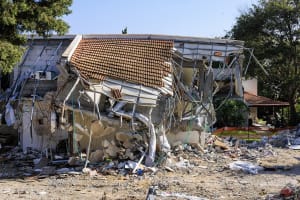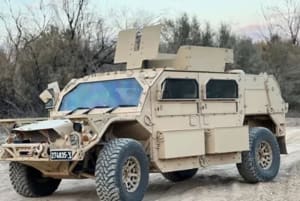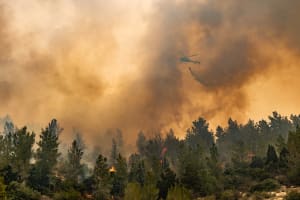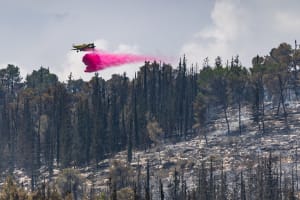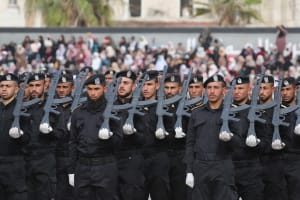Echoes of October 7, 2023: A firsthand visit to the devastated community of Kibbutz Be’eri

My first visit to the communities devastated by the atrocities of Oct. 7, 2023, was sobering and haunting. As my friends and I drove along roads that had become heartbreakingly familiar from the countless photos and videos we had seen since that day, the weight of the tragedy settled over me.
With every blink, I could hear the echoes of that morning – screams of those desperately seeking refuge from the blood thirsty terrorists, shouts in Arabic, gunfire, the shattering of glass, and the relentless crackling of flames as they consumed trees, snapping their branches. The metallic groan of cars collapsing under the heat and destruction was deafening in my mind in that moment.
Ironically, my visit to the Nova festival site in Re’im, Kibbutz Be’eri, and the car graveyard took place on April 13, 2024 – a date etched in my memory for a different reason. It was the day I had dreaded since the war began: the day we got word that Iran was to attack Israel for the first time.
The actual attack would come in the wee hours of the 14th, but there were no guarantees.
I had already endured the terror of Hamas rockets from the west, Hezbollah missiles from the north, and the more sophisticated ballistic threats from Yemen in the south. But this was different. I had been bracing for the evil that would come from the east – from Iran – for months.
That night, exhausted from the emotional toll of what we had witnessed in the south, my friends and I returned to their home. I was grateful to be staying with them, though none of us could have anticipated that, within hours, Iran would launch hundreds of ballistic missiles and drones at us.
We had a few hours' warning. Scrambling to prepare, we filled every available container with water – anything we could find – just in case fresh water became inaccessible to us. Drinking, cooking, flushing the toilet – it all had to be accounted for. We gathered flashlights, batteries, and set up the bomb shelter where I would be sleeping. Then came the official words no one wants to hear:
“Iran has officially launched their attack on Israel. The missiles will arrive in the morning, so try to get some rest while you can.”
Rest? Iran had just launched missiles and drones at us, and we were supposed to sleep while waiting for potential annihilation? Needless to say, that didn’t happen.
I remember the first siren echoing from the hills of Jerusalem, distant but unmistakable. Then, the windows of my friends’ home shook and rattled with the loudest booms I had ever heard not too far away. I watched as the warning map on my phone lit up with sirens in areas all around us – yet, miraculously, they never went off where we were.
I sat on a mattress on the floor of the bomb shelter, waiting for my friends to join me when the “inevitable” sirens sounded. That’s when I noticed something strange – my left arm felt electric. As I looked down, I saw my muscles twitching under my skin, moving involuntarily. My mind was calm; there was no overwhelming fear, no spiraling thoughts. I had long accepted that an Iranian attack would be devastating, but strangely, in that moment, I felt an unshakable peace – a strength carrying me through.
But my body told a different story.
Reports had warned that Iran’s attack would last for hours, but in reality, it was over in about thirty minutes – not that we knew that at the time.
Sleep finally found me around 5 a.m., only to slip away again by 7 a.m.
Uncertain of how Israel would respond or what the fallout might be, I stayed another night with my friends before finally making my way home on the third day.
The next Iranian attack would come five and a half months later – on October 1, 2024.
Fast forward to March 2025, my friends wanted to visit mutual friends in Kibbutz Be’eri to interview them for an article. I had not walked around Kibbutz Be’eri from the inside, only the area outside the kibbutz. I tagged along to see our friends and also see in person what my eyes had seen for over a year on news footage and social media posts.
In truth, I didn’t know if my heart could handle it. I lost my mom in a house fire 12 years ago, and to see the homes ravaged by fires that were set by sadistic terrorists seemed like it could be too much for me.
But I had to go.
I felt compelled to remember and honor those whose lives were stolen in such a horrific way – some of them murdered in cold blood while their executions were streamed live by terrorists on social media. For many families and friends, that was how they found out their loved ones were gone. The brutality, terror, and pure evil displayed by Hamas and thousands of Gazan citizens that day seemed boundless.
As we started down the familiar road I had traveled nearly a year prior, my muscles tensed. This time, however, I noticed the landscape had changed. Newly paved roads stretched ahead, patches of green grass had replaced the scorched earth that once held the fallen, and spring flowers – including the delicate red anemones, "kalaniyot" – sprinkled the ground, whispering promises of renewal. I exhaled, realizing I had been holding my breath.
At the entrance gate – the same one I had seen countless times on the news – our friends greeted us. I had been here before, spoken with the guards, and stood at this very spot a year earlier. But this time was different. This time, I was going through the gate. I had never stepped beyond it, never seen what lay on the other side. Now, I was about to face the unknown – along with whatever memories or triggers awaited me.
Driving through the area, the destruction didn’t seem “too bad” at first glance. But a closer look told a different story – walls pockmarked with bullet holes; open spaces razed by the Israel Defense Forces (IDF) after terrorists had used them as hiding places and fortress covering for their battlegrounds. Be’eri had remained under siege for two agonizing days before the IDF could fully reclaim it.
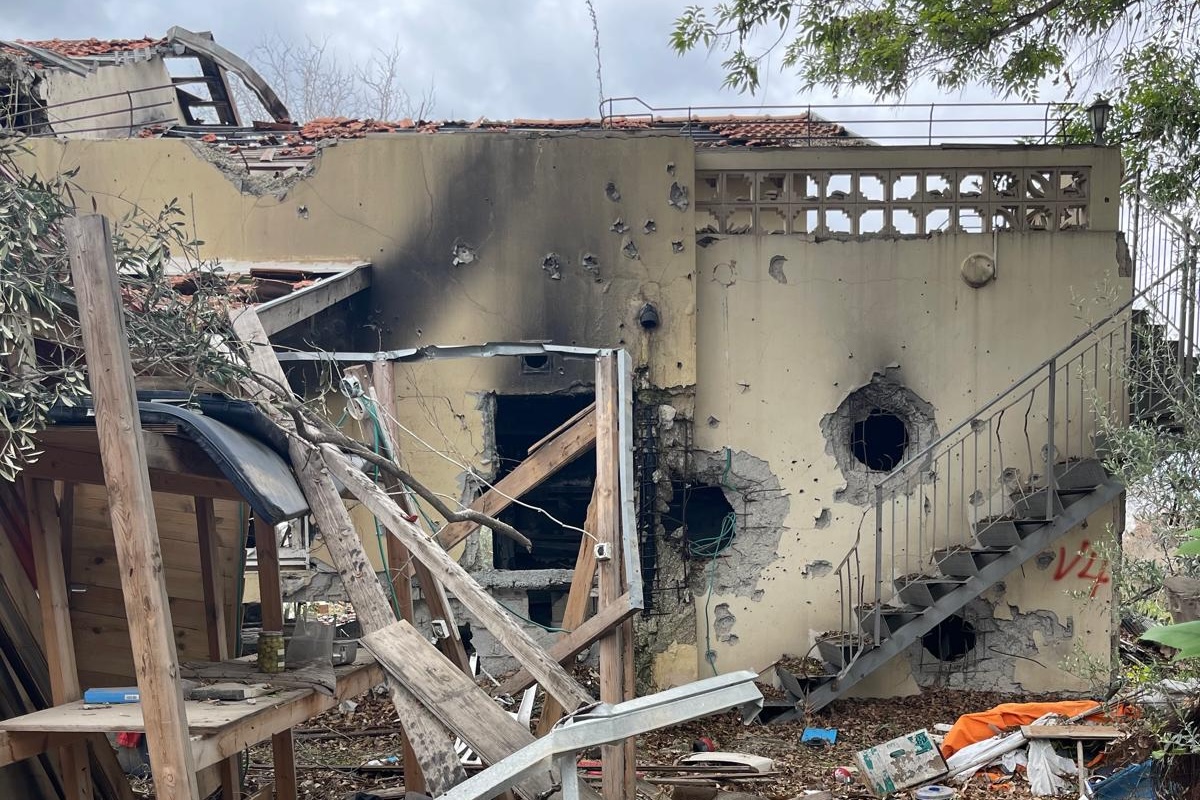
My friend Mei and her husband, Yaya, warmly welcomed us into their home for a quick “pit stop” and to drop off our bags before setting out on foot to tour the kibbutz. Having grown up there, Yaya knew every corner of Be’eri by heart.
Our first stop was the site of the dental clinic, where a nurse and an injured resident had miraculously survived the horrors of Oct. 7. From there, we continued to the kindergarten – known as “gan” in Hebrew. The contrast was striking: a place meant for the laughter and learning of young children now scarred with bullet holes and gaping walls torn open by RPGs used by Hamas to bring death and destruction. The weight of that juxtaposition was inescapable.
We walked through neighborhoods to visit the places where Yaya’s sister and nieces were taken hostage, along with Emily Hand, whose father had initially expressed relief upon learning that his daughter had been killed on Oct. 7, rather than taken as a hostage into Gaza. Emily was among the first group of hostages to be released in November 2023, and it was then that her father learned the truth – she was still alive.
Even Yaya had no certainty about the fate of his sister and nieces. The residents of the kibbutz were left waiting for DNA results to confirm the identities of their loved ones, many of whom had been murdered and burned. When no DNA matches came back confirming the deaths of Yaya’s family, he understood the grim reality, despite hearing rumors that his nieces had been killed. It soon became clear to officials and community members that they had been kidnapped and taken into Gaza.
Yaya hid in his home until he was rescued by the IDF around 8 or 9 p.m. the day of the invasion. They divided groups of people in the Gaza envelope and transported them to various hotels around the country. Yaya chose to go to a hotel in the Dead Sea area as several Be’eri families were there.
The tour continued as we visited several homes that had been scorched and marked by bullet holes and shrapnel from grenades. These homes had been ransacked by terrorists and were left exactly as they were on that devastating day in October. New, unused shoes were scattered across one family’s porch, while dishes and everyday kitchen items remained on counter tops next to their opened and destroyed refrigerator and ransacked drawers.
One home had been transformed into a makeshift memorial. Amid the destruction, a small “art corner” had been set up for visitors to pay their respects and honor the victims by writing and painting on broken pottery shards and roof shingles found around their yard.
We continued our journey around the kibbutz and saw the fence where the terrorists gained access to the kibbutz and quickly surrounded the community. The recent rain on the kibbutz revealed once hidden bullets surface again and the children made a game out of collecting and counting them. I, too, brought home one of the bullets. Does it represent the schemes of the enemy or the defense of the innocent? I’ll never know as there is no visible markings on it.
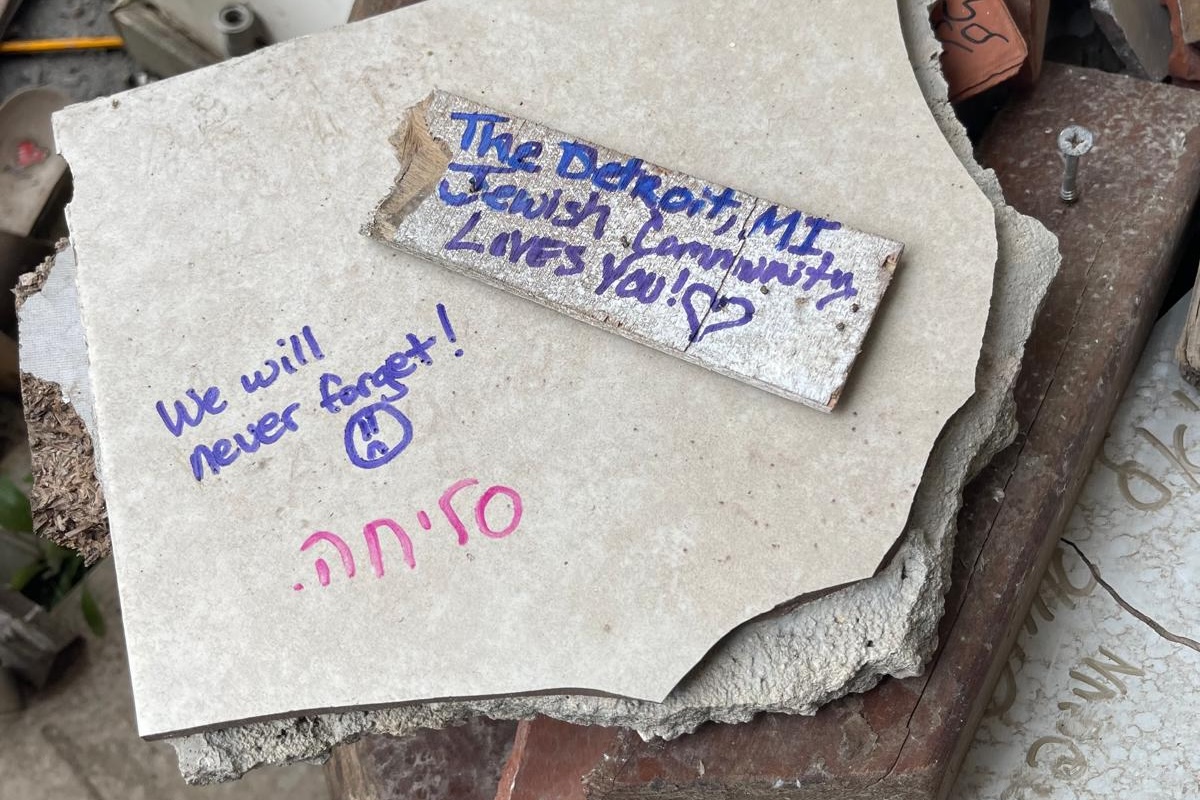
Yaya had kindly arranged for us to have a meal at a friend’s house in the kibbutz, as his own home was too small to accommodate five adults and four children. It was incredibly generous of his friends to open their home to us, even in their absence – they were staying at Kibbutz Hatzerim, where most of the 900 remaining residents of Be’eri have been temporarily resettled while their community is being rebuilt. Only 100 people have chosen to remain and live at the kibbutz in this period of transition. The reconstruction is expected to be completed by August 2026.
Our tour continued, and we visited places like the zoo and one of the work sites. The children especially enjoyed climbing onto the giant tractors, getting a feel for the driver's seat and the impressive view from up high.
Eventually we made our way to the cafeteria for the interview my friend wanted to conduct with Yaya and Mei. It was incredible to learn that the building didn’t suffer any damage because it was closed early on Shabbat morning when the terrorists attacked. The terrorists were out for blood and destruction of personal homes that day and it appears they didn’t want to waste their time or resources with destroying empty buildings.
As we were wrapping up the time with our dear friends, we were taking photos outside when we heard two massive booms. They didn’t even flinch while we were all ready to drop to the ground.
Hamas had sent rockets to Israel (just north of the Gaza Strip), and what we heard was Israel’s response in the form of an air dropped missiles from the Israeli Air Force. Yaya and Mei assured us that we were safe. In that moment, I didn’t have the time – or perhaps the mental or emotional bandwidth – to consider anything other than trusting my friends.
We said our goodbyes and began the drive home. As we made our way back to Jerusalem, a beautiful sunset painted the sky over Gaza – its beauty contrasted by the dark plumes of smoke rising in the distance, a stark reminder of the ongoing reality there. And in the rearview mirror, the remnants of devastation stood frozen in time, a haunting reflection of the tragedy that had brought us to this moment.
You might also like to read this:


